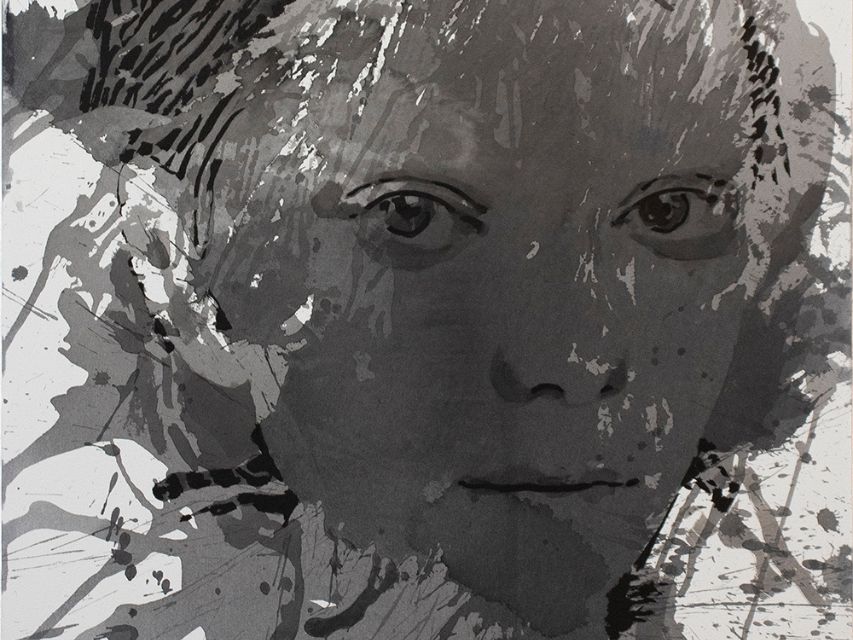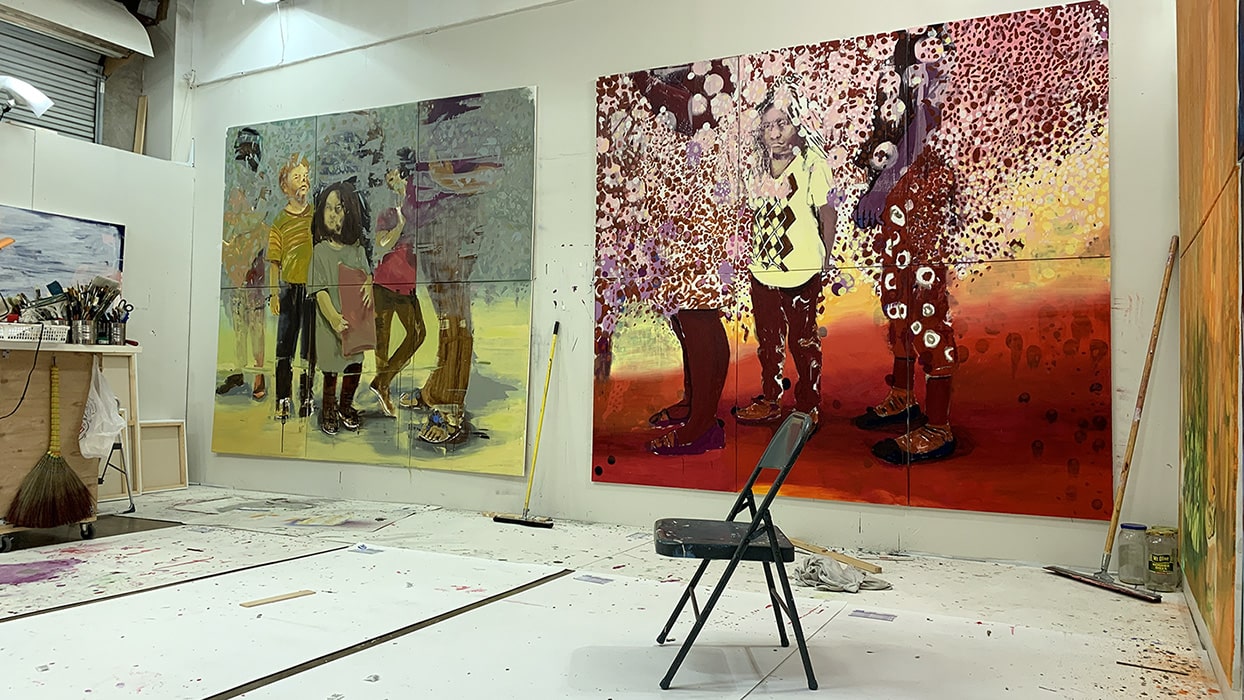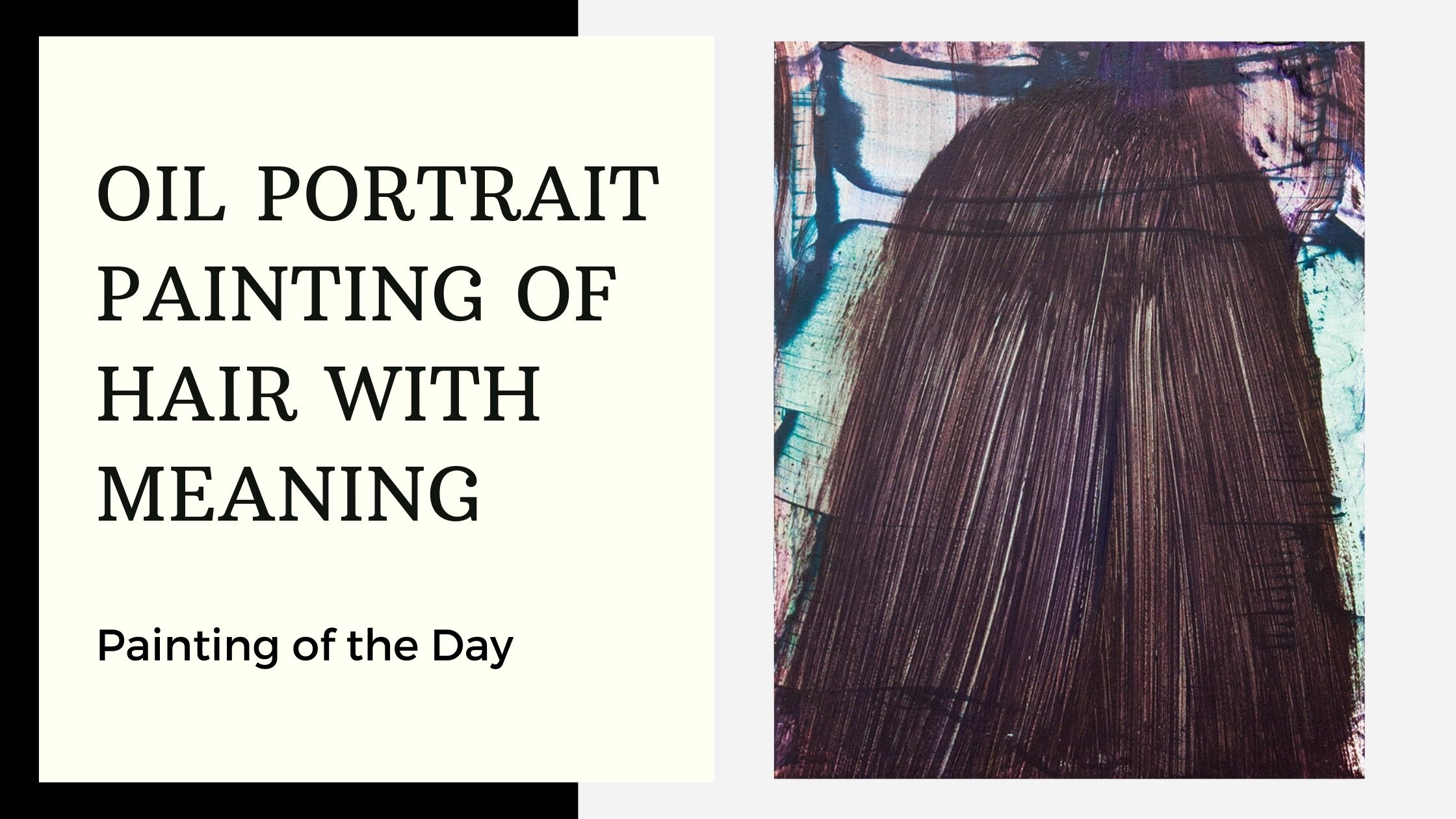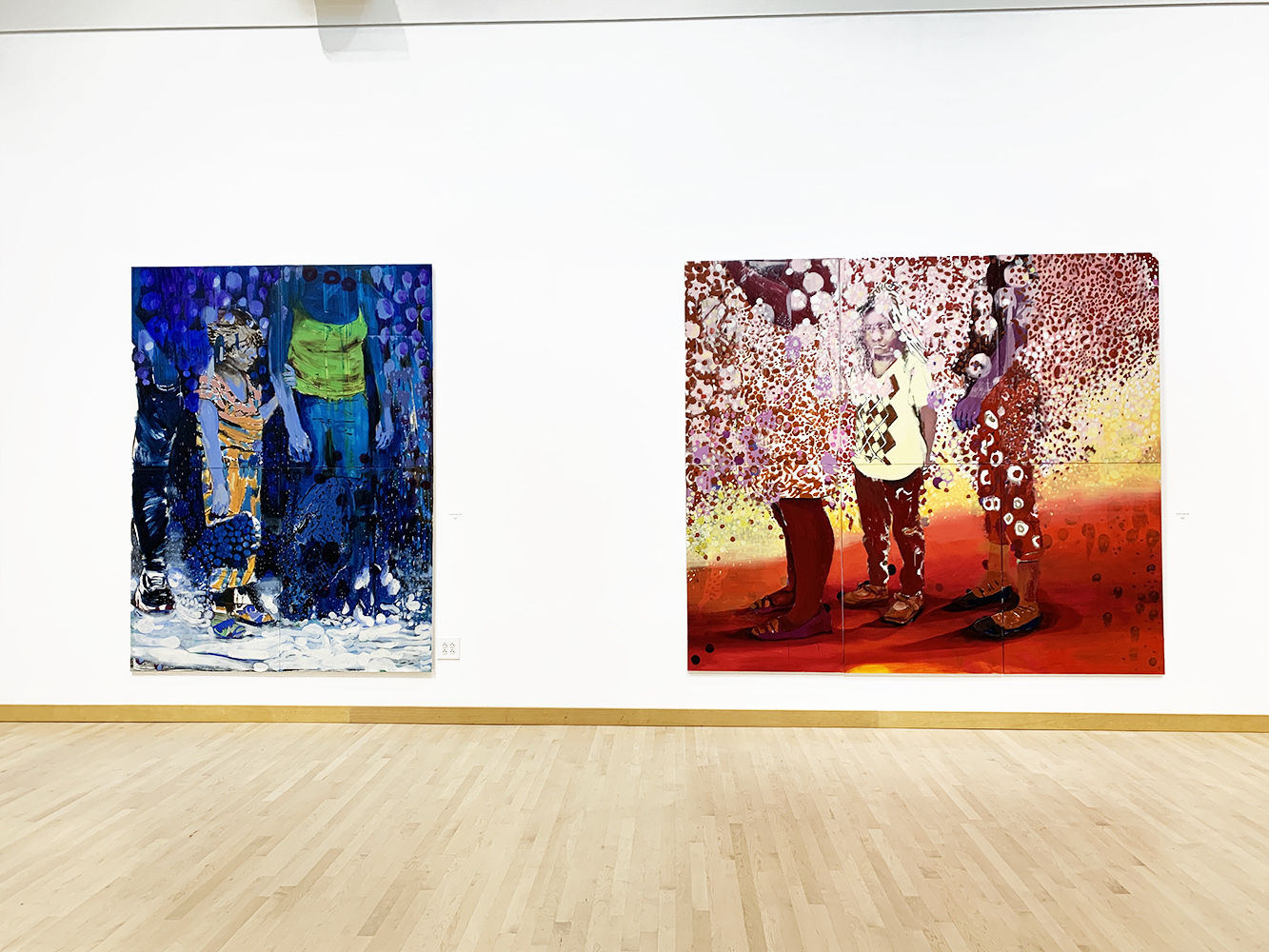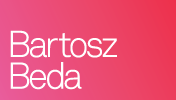“Herculean Labor of Painting”
essay by Kyunghee Pyun, Ph.D.
In the digital age of the 21st century, it is rare to find a young artist absolutely devoting himself to painting. Painting is one of the oldest forms of purely plastic art and thus intuitive along with clay figurines or ceramics. Nonetheless, there are not many painters out there, let alone great or ambitious painters. All the young artists of our time now aim for installation or conceptual art. Painting or drawing is a subordinate form as opposed to digital scanning or animation software.
Beda is an enormously stubborn artist who took painting as his primary language of expression. First and foremost painting is the whole world to him. He says, “Painting is an act of physical motivations […].” What a sensational statement! Since the end of the 1950s, we lost laborious painters bending over a canvas and flaunting a brush.
With his brush, however, Beda is not creating a meaningless surface full of paint smudges. He is decoding his “fears and absurdities during the process of their formations on canvas and in the human mind.” As a gifted artist from his early childhood, he knows how to carry nuanced readings of psychological impacts of his mind with painting on canvas. He now wants to extend his ability to be able to leave resonating effect on other people’s minds.
For his first solo exhibition in Bogota, Colombia, Beda has been creating a whole series of new works. For the past six months or so, he settled in his new environment in the U.S. leaving behind his adopted hometown of Manchester and removing himself further away from Lodz. His new works are simultaneously full of excitement and agony due to the time we live in. Over the summer, the Russian invasion of Ukraine became fierce, and now unending, leaving whole of West Asia in a distressed condition. This is not a déjà vu of the First World War or World War II, we all hope, but conflicts are ever more intensifying. Beda is a compassionate intellectual translating the current political turmoil into his visual expression— now he is a painter in a mask. Beda writes, “The mask idea came from the conflict in Ukraine, but it doesn’t show that conflict and as I mentioned, it is not about that. I want to make sure that the viewer will not associate that fact with paintings. The mask represents the social aspect and positions myself in it as an artist. There is a sort of absurdity in the mask, which shows the process and revision of myself as a painter. The work also shows a distortion between the painting and its surface. I want the viewer to acknowledge both aspects of the paintings, which are gestural motivation and use of colour”.
In this exhibition, Beda exhibits his new works in a series called “Collecting Drops and Marks.” A random observation of the paint drops that accumulated on the studio floor inspired him to focus on an enduring method of dropping ink on small canvases. Like any other painted works by Beda, this process requires an enormous amount of concentration and precision. Forms and shapes created by dropped paint splotches are beyond any control and come out of accidental forces of gravity. Accordingly, the process involves patience and tolerance as if to create peace in an atrocity-stricken war zone. “It is a long process of collecting the drops, which in a way are very precise and perfect,” says Beda. To me, his attempt is unique and lonely, separating himself from a famous tradition of whimsical and action-driven gestures of abstract expressionism in the 1950s. Paint drops on stacked canvases by Beda stay at an opposite end from painting drips remaining on the floor of Jackson Pollock’s barn-studio in East Hampton. By stacking small canvases with traces of dropped paint, Beda creates his own hourglass recording all those hours of anticipating and dreaming.
Despite all the effort of catching paint drops and marks, Beda decides to destroy his canvases. He now works on a new video series to be entitled “Fire Painting” or “Burnt Painting.” In his blue mask, Beda sits down in front of a pile of canvases and sets it on fire. It never occurred to Beda, but to me he looked like a modern version of the Hindu God Shiva, god of destruction and creation. Shiva in his darker complexion performs a fatal dance, creating a big circle of fire surrounding him. After this dance of destruction is over, a new beginning comes back and order is restored in the world. Beda says, “The action of burning the canvas was also an act of creation. I was trying to reach perfection and come back to the very beginning – the emptiness. Emptiness is a moment before the creation of the universe”.
For Beda, like any other painter, the emptiness of the canvas is an invitation and a call for brutal confrontation. In his related series of “Being Painted,” he welcomes the white empty surface of the canvas and sends an admiring gaze. Instead of painting on the canvas, he paints on his body with the uninterrupted canvas as a background. Instead of making the canvas an object of his vision, he volunteered to make his own body an object of the gaze while the canvas stands behind, probing his movements. Many artists have stressed the emptiness of the canvas or the paper in the past and the present. I can decipher a long lineage of Ni Zan, Wen Zhengming, Zhao Menfu and the like of great ink painters and scholars of the Yuan dynasty of China or American minimalists of the 1960s. Beda, however, is a groundbreaking thinker who imbues the canvas with a living soul. As he agonizes over the victims and sacrificed children in the midst of political conflicts in Ukraine, Syria and Palestine, he makes his body the locus of tension and ambition while leaving the canvas empty. What a humane way of reconciling with his victim or object. I admire his new attempt of objectifying his body and restoring subjectivity to the canvas. Beda is waiting for his next mission. What might come after burning his canvas? More excitement and anguish will follow.
Kyunghee Pyun, Ph.D.
Curator and Art Critic in New York
Professor, State University of New York–Fashion Institute of
Technology

